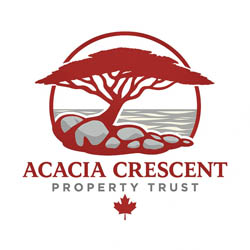The President's Story on a "Well" Gone Bad!
Did you know? I sure did not!
When a well goes down, many questions come to mind. Questions like “Where is the well?” to “Why did we not see this coming?”. The first thing I had to do was to learn about the well, its parts, and how it works. I share this not in “well technician lingo” but instead from the way I had to learn the ins and outs of something I knew nothing about, but was one of nine board members which held the responsibility of making decisions for the Club. I hope my story helps you learn about the “aorta” of our Club.
Let’s begin with…
What is a well? Seems like a simple question, but my conversations with others made me aware, a well is not just a well! A well is basically a hole that has been drilled, bored, washed, pushed or dug into the ground to access water in the ground or “groundwater.” A well is held open by a pipe, known as a “casing,” that extends to an aquifer. An “aquifer” is a layer of sediment, such as sand or gravel, or a layer of rock, such as sandstone or limestone, that is saturated with water and can transmit water to a well. Once the casing is set into the aquifer, the space between the hole and the casing is filled with a material called “grout” to prevent surface contaminants from entering the aquifer. Unless a well is flowing under natural artesian pressure, a pump is used to extract water from the well. A water-supply well can provide drinking water for private or public use, or can be used for cooking, bathing, washing, or lawn watering. Wells are also constructed for irrigation, livestock watering or other agricultural purposes, commercial/industrial purposes, monitoring water quality or water levels, or dewatering for construction. Our Lakes well is set into the aquifer at 765 feet (was 800 feet years ago), has a pump and is used for irrigation and landscaping for our Lakes Golf Course and several HOAs inside Westbrook Village.
What does the well look like? There is a casing, an inner column and shaft, a pump and screen, and a motor. The pictures below will give a much better understanding of what we have in our well.
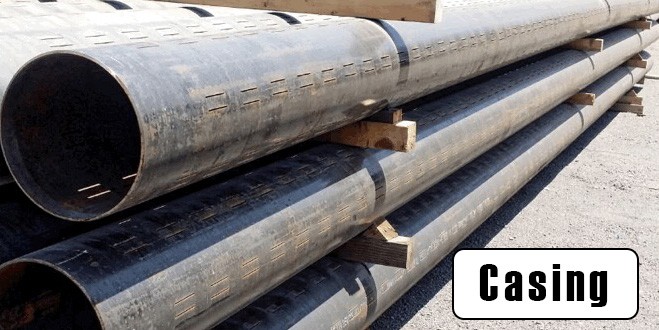
 |
 |
 |
 |
Where is our Lakes Well? Our well is located in the courtyard at Village Square where it was built during the time of orange groves in the 1940s.
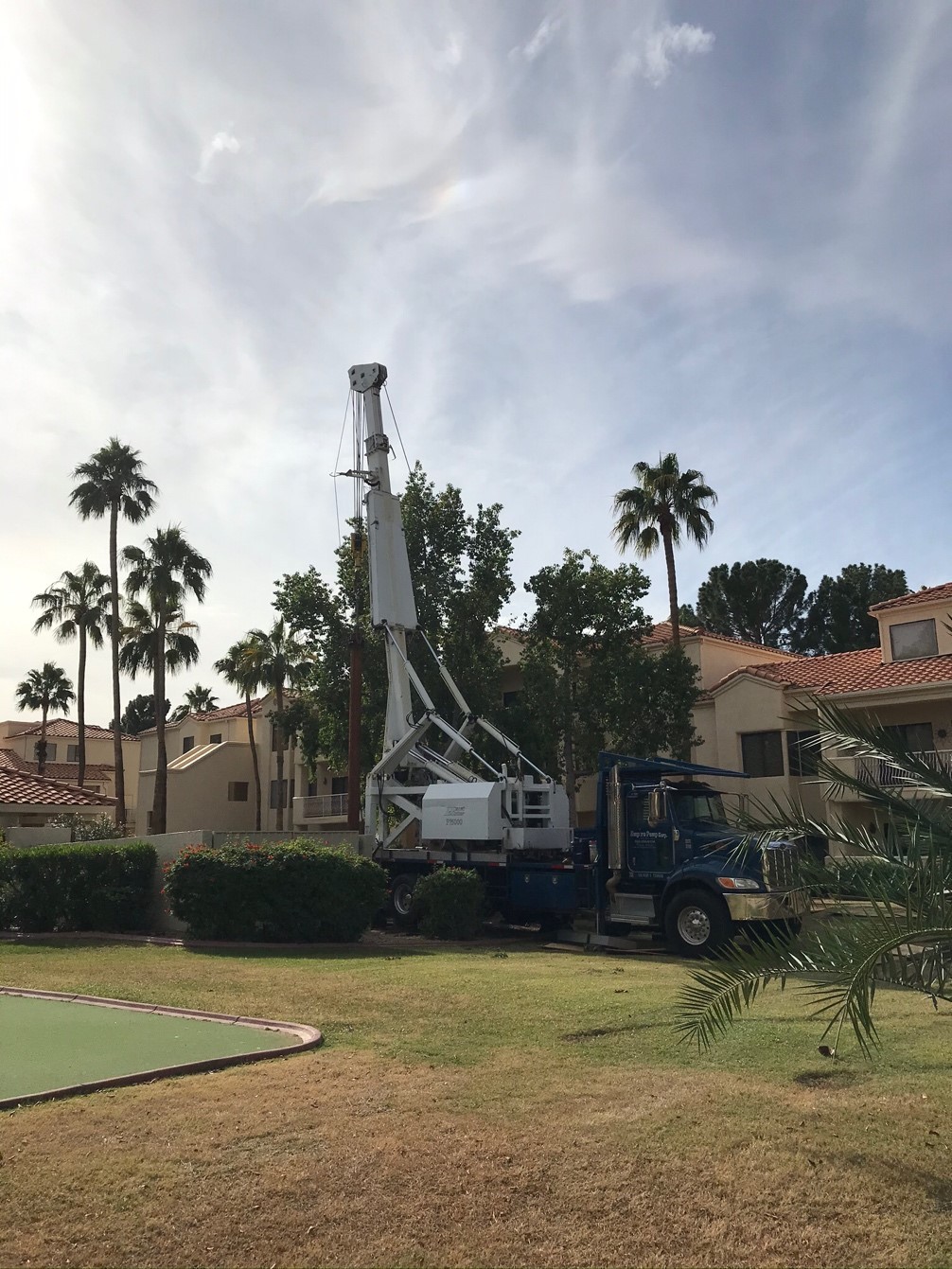
What was the diagnosis? Who made the diagnosis? How was it determined?
When we have an ailment we call the doctor for a diagnosis of the condition. Our “well doctor” was Empire Pump Corporation.
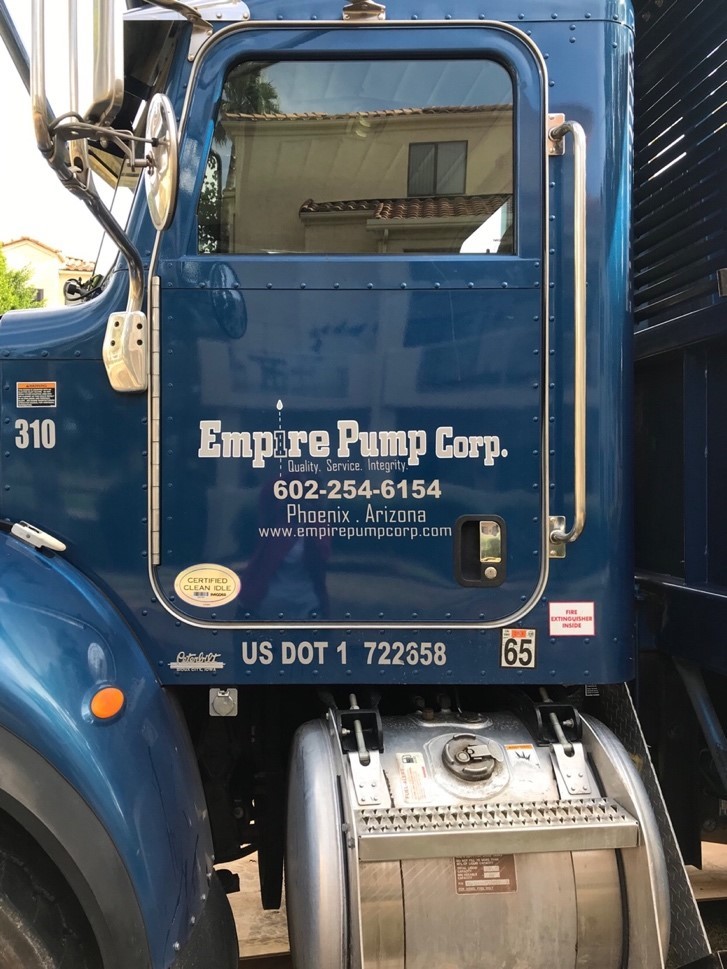
Empire began with a video. I equate this to an X-ray. A picture at a moment in time to better determine the cause of the condition. In order to get the video, we had to remove the motor, the column and shaft in order to pull out the pump and screen. Now we could drop the video camera down the casing. That process alone takes 3-4 days. And due to the location of the well not providing much room to zoom, it required moving and staging all these pipes and equipment between the well location and Empire’s yard.
It was expected, based on last videos of the well taken in 2011, that we would have a break or two in the casing that could be patched and sealed. However, it turned out there were over 31 breaks and a very thin and weak casing. In reviewing the video, I likened it to an egg with a baby chick pecking at the thin shell to get out. Except these were rocks pecking at the casing to get in.
The well casing could not be repaired and there was a very high risk of the well collapsing which would then require a new well.
Prescription? Drop a liner inside the failing casing to reinforce the well. The casing is 16" in diameter and hopefully we could use a 14” liner in order to maximize the water output. Think of a fat straw with holes and inserting a thinner straw inside it to seal the holes and suck water through. If not we would have to go with a 12” liner. I likened this to hooking up a hose to a faucet. The smaller the hose the less the water output. The less the output, the longer one must run the pump. Running the pump longer increases electricity expenses and wear/tear on the pump, which negatively impacts the lifetime of the pump and the well.
Empire provided pricing for both a 14” and 12” liner. Remember the picture of the inner column and shaft? The diameter of that inner column is 12”. If we had to go with a 12” liner, we would not be able to use our existing 12” inner column and instead would need to purchase 10” column pipes. Clearly the 14” was the best choice, but not without risk. Can we get the 14” liner all the way down the well hole? Is the casing strong enough to get the liner down the well hole without collapsing? We needed more information!
Empire ran a caliper and a gyroscope test to determine the drift and inner path of the well. To understand the “drift of the well”, imagine if you are standing at point A and walk 700 feet to point B. You would stray, left or right, or both, from a straight line as you walk between the two points. Over the years as the ground shifts, it pushes the well, or it drifts, from the original dig. This knowledge is important to determine the feasibility of dropping metal pipes inside the casing, 765 feet down, adjusting to any drift that exists. Too sharp a drift will not allow the liner to be dropped to the bottom of the well.
To understand the “inner path of the well”, imagine as you are dropping the liner down the well, there comes a protrusion that can halt the drop. When you start dropping the liner you really don’t want anything to protrude and stop the drop to the bottom. It was determined we had a protrusion and felt it safer to “swedge” the casing. This was like reaching down to the point of the protrusion and using your hand to push and smooth the protrusion closer and flatter to the casing wall keeping the inner path smooth and clear. A special tool was used to go to that location (450 ft down) and flatten it against the casing. Below you can see the video and the observation station.
 |
 |
While we waited for the liner to arrive we had lots of work to do. Empire began the “bailing” process which is removing all the loose sediment, sand, rock and earth from deep down in the well hole and hauling it away.
Once the liner pipe arrived, after a little snow delay from the east coast, we were on track to begin to drop the liner pipe. Monday, 18 November, we staged the pipe in the Village Square well location. We were holding our breath that we had done everything needed to let that 14” pipe drop easily and get it passed any protrusions. Each of these pipes are 21 feet long and they were stacked end to end, one at a time, double welded and then push their way further down the well hole.
Thursday afternoon (21 November) we successfully reached the well bottom. And that was after the Tuesday and Wednesday heavy flooding rain storm. Friday we had the inner pipe (column and shaft) staged and ready to drop into the liner. And on Tuesday 26 November, 1:33 p.m., the motor was reinstalled on the top of the well and our well was back in action pumping around 1100 gallons of water per minute. Mike Mullin from Empire Corp, David Escobedo (WBVGC Superintendent), Kurt Kimmerling (Board Treasurer) and Jill Riedel (Board President) were there for the long awaited moment and clearly felt a sigh of relief that we could return trucks, cut off the city water hydrants and get back to normal golf course management.
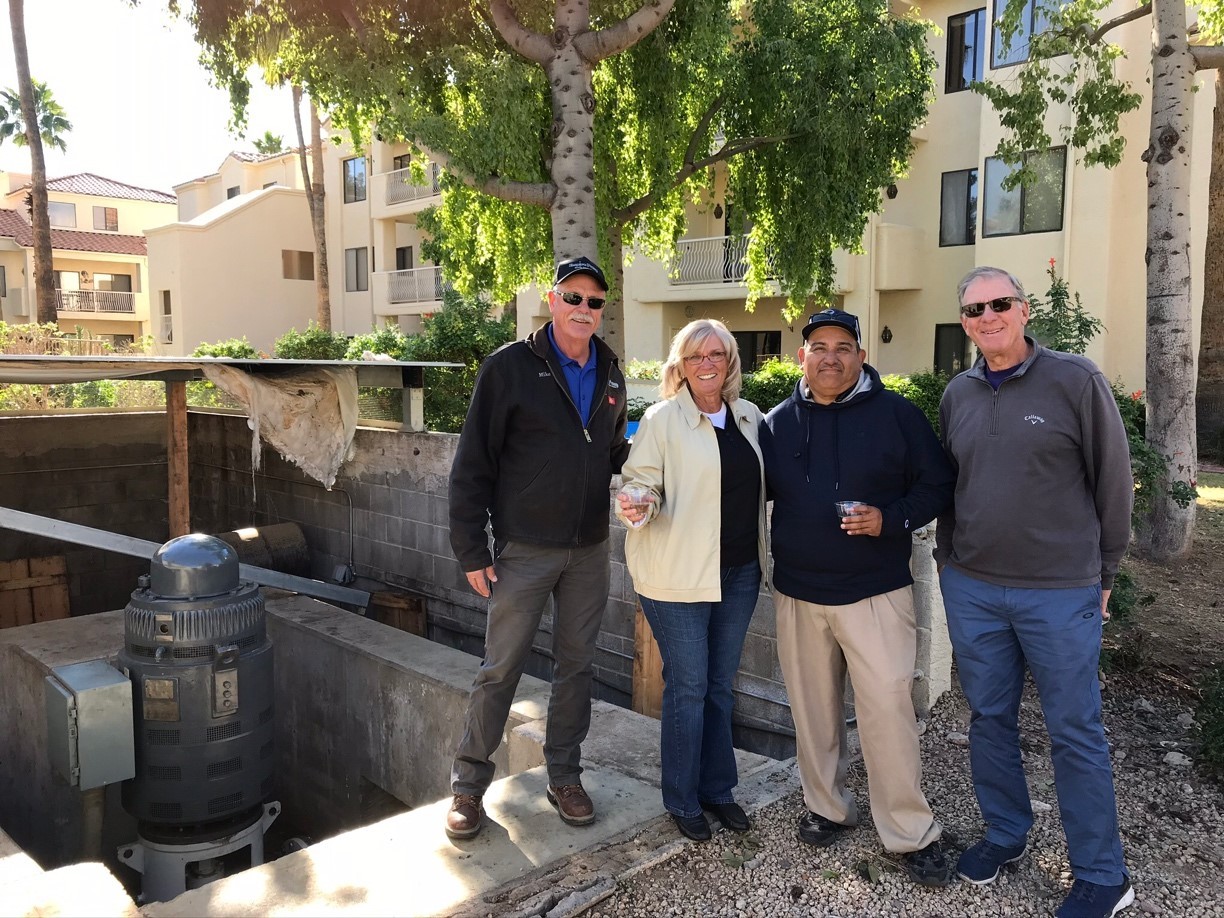
The final question: “How did we not see this coming?”.
Now that you have seen the anatomy of our well, the components and instruments needed to provide an “exam” of its wellness, and the understanding that everything except the motor is down a 14” pipe, 765 feet deep, surrounded by earth, rock, sand and water, you might understand the difficulty in calling in a “well doctor” to do an annual exam.
A well sits in a living earth that moves, shifts, and crumbles. The X-ray of this moment in time is only as accurate as the time it is taken. If we want to routinely examine the well, it requires the removal of the motor, the pump, the screen, and the inner column and shaft, in order to video what has happened since its last exam. The estimated cost of that process is 35-40K, requiring 5-7 days, providing no water during that time. And not to mention each time one pulls out the guts of the well, you run the risk of causing damage that did not exist until you did so. It is like ensuring you take your car for scheduled maintenance only to have something go wrong between maintenance appointments. You just never saw that coming. Or your mechanic warned you something might go wrong, but you push the limits weighing the risk. Sometimes you win and sometimes you lose. It is like going to your general practitioner and when there is some unexplained symptom he refers you to a specialist. Your specialist runs tests and based on the results of that given time, you make decisions on risk and reward. Sometimes you win and sometimes you lose.
Your Board of Directors are very pleased with the reaction of our membership and community during this emergency. Clearly you all took on the role of owner. You shifted, flexed, ducked and prayed with us through the whole repair process. You were understanding when we were not able to fully overseed. We all found the Lakes course can survive with limited water and partial overseed. In fact many positive comments have come forward on how David Escobedo, Jose Murillo and their crews stepped up and out of “normal” responsibilities to take on some heavy lifting while our well specialist cared for the well. Turf paint helped the look of the course (In fact many thought it was overseeded grass) and members have been able to enjoy the long runs of the ball and the smooth putts on the greens. And admittedly, it is better than expected. Brandon Evans and his pro shop team, challenged themselves everyday as they tried to maximize the number of players wanting to play golf, on one course. We found how spoiled we are with less than 4 hour rounds and tee time availabilities to fit our desires. Westbrook Village is very lucky to have the team we do – the course crew, the pro shop, membership sales and admin office – every employee dug in and cared for the Club as if it were their own. So to all our employees and members – thank you!
We have made it through this crisis. We will make it through the next phase of the winter and what it might do to the Lakes course. Transition will not be like the past. David will keep us posted on what and why he will do what he has to do to keep the Lakes Golf course a long time beauty of Westbrook Village.
Respectfully,
Jill Riedel,
President, WBVGC
November 2019



















